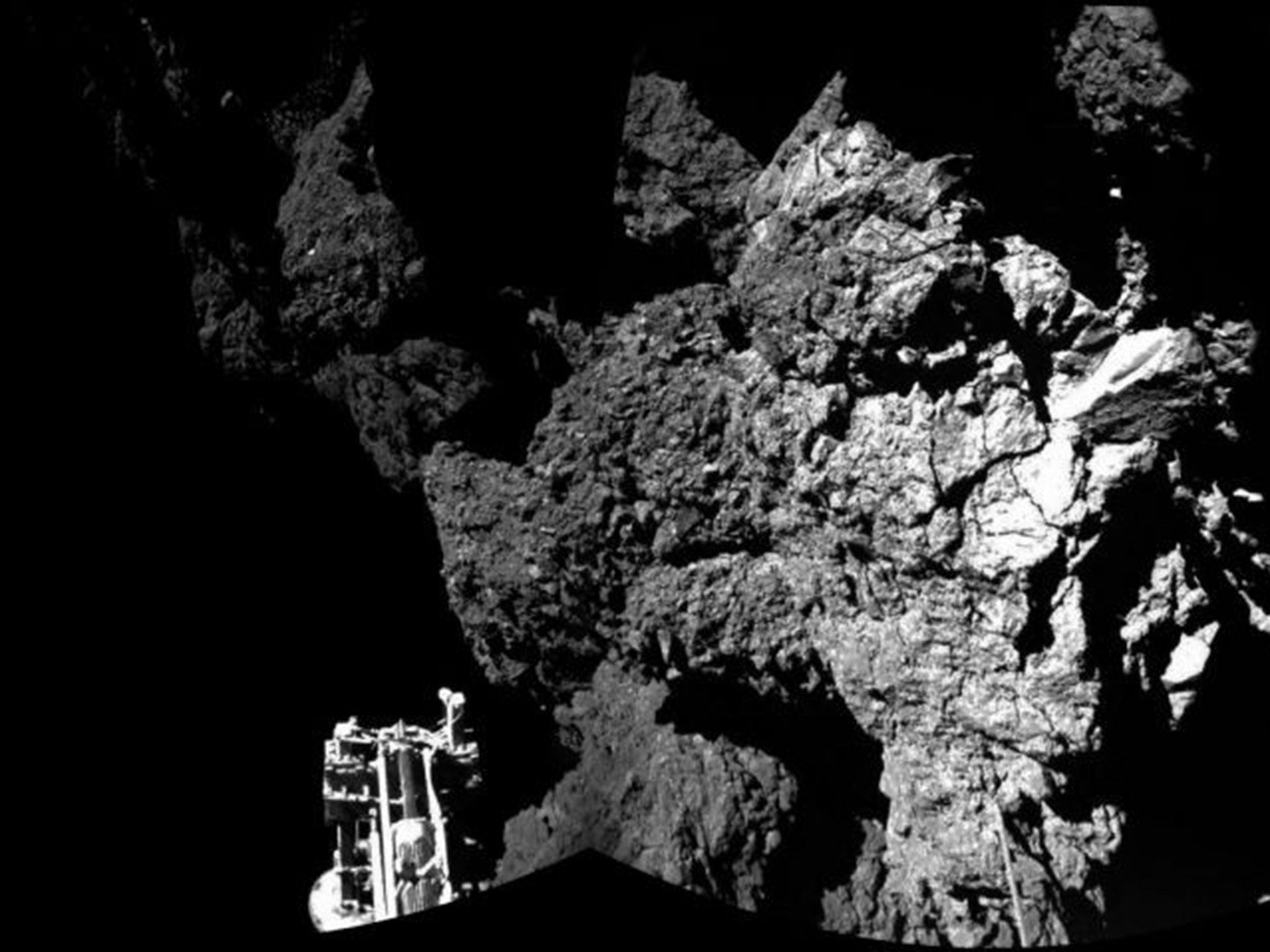Philae has discovered organic molecules on comet 67P - but what does that really mean?
Scientist managed to send the data back via the Rosetta orbiter before Philae's power ran out and the lander went into hibernation

Your support helps us to tell the story
From reproductive rights to climate change to Big Tech, The Independent is on the ground when the story is developing. Whether it's investigating the financials of Elon Musk's pro-Trump PAC or producing our latest documentary, 'The A Word', which shines a light on the American women fighting for reproductive rights, we know how important it is to parse out the facts from the messaging.
At such a critical moment in US history, we need reporters on the ground. Your donation allows us to keep sending journalists to speak to both sides of the story.
The Independent is trusted by Americans across the entire political spectrum. And unlike many other quality news outlets, we choose not to lock Americans out of our reporting and analysis with paywalls. We believe quality journalism should be available to everyone, paid for by those who can afford it.
Your support makes all the difference.The Philae comet lander has discovered organic molecules on comet 67P, but unfortunately that doesn’t mean there’s anything to get excited about - for the moment.
Although ‘organic molecules’ certainly sounds a lot like ‘organisms’ or even – to the terminally over-excited – ‘aliens’, it’s actually just chemistry shorthand for ‘stuff with carbon atoms in it’.
Organic molecules can be gas, liquid or solid, and include such unexciting substances as methane (one carbon atom, four hydrogen atoms) and methanol (otherwise known as ‘wood alcohol’ – add an oxygen atom to methane and rearrange the other components).
Although the folks from the European Space Agency (ESA) haven’t said exactly which organic molecules Philae has found, it’s likely that it might be these two – as the Rosetta orbiter already spied them on the surface of the comet months back.
So. Organic molecules aren’t the chemical footprints of little green men, but they might still provide insight into the sort of ingredients that were delivered to Earth eons ago to (possibly) kickstart life - a theory known as ‘cosmic seeding’ or ‘panspermia’.
At the moment though, the ESA researchers are still trying to interpret the results sent back from Philae’s Cosac instrument (one of the ten named instruments on board) just before the lander went into hibernation.
Data from other sensors has also made it back home, with scientists manning the Mupus component suggesting that the surface of the comet is covered by 10 to 20 centimetres of dust with hard water-ice underneath.
Unfortunately the awkward landing position of Philae (it bounced across the surface of the comet twice after its securing harpoons failed to fire) means that no samples have been drilled from the surface.
Scientists are still hoping that they will be able to reactivate the craft as the comet approaches the Sun, changing the lay of shadows on its surface and hopefully delivering fresh power to its solar panels.
Join our commenting forum
Join thought-provoking conversations, follow other Independent readers and see their replies
Comments